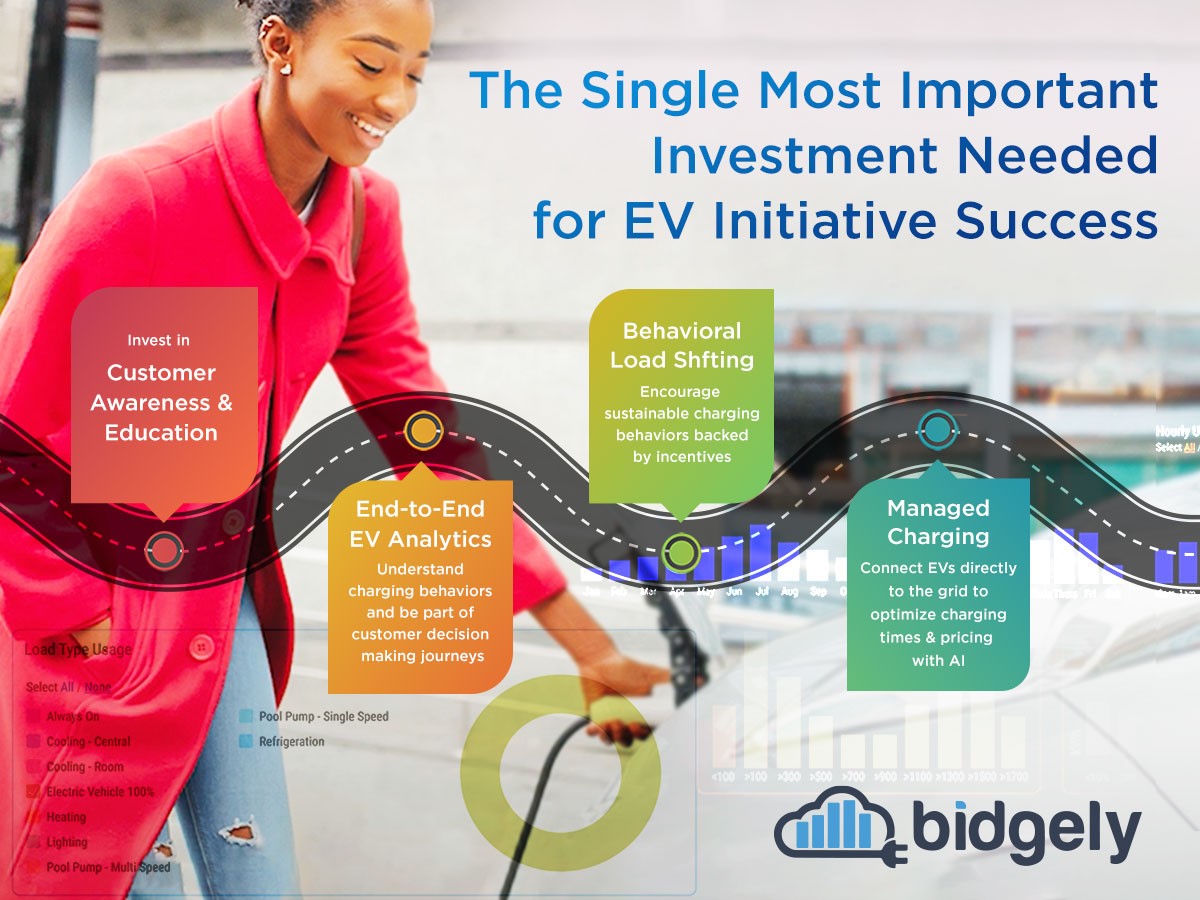
No area of operations reveals the risk of failure to transform AMI data into actionable insights more strikingly than transportation electrification.
A 2020 Consumer Reports survey found that more than 70 percent of U.S. drivers would consider buying an electric vehicle (EV). It is precisely that consumer enthusiasm, together with government incentives and the ICE-to-EV (internal combustion engine-to-electric vehicle) transformation underway among car manufacturers that has led experts to forecast $1.7 trillion in new electric utility revenue from demand additions alone. Boston Consulting Group estimates that each EV adopted has the potential to generate $5K to $15K in revenue for the utility over the vehicle’s lifespan; this includes an additional 4,000 kWh per year; capitalizing infrastructure and NWA; and charging equipment and other product sales.
Few would argue that the industry is poised to experience a revolution in demand growth and revenue potential unlike anything seen in decades.
It’s not surprising, then, that in a June 2021 Utility Dive Pulse Report, titled What Utilities Know (And Don’t Know) About EV Drivers and How Better Customer Insights Can Maximize Utility Investments in Electric Vehicles, nine out of 10 utility executives surveyed pointed to consumer demand and revenue opportunities as the biggest drivers propelling them to increase investments in promoting EV adoption, including advertising, charging infrastructure and grid edge capability development.
But what about the investments that utilities have already made?
In its AMI Global forecast 2020-2025, Wood Mackenzie Power & Renewables Energy Research predicts that 1.3 billion smart meters will be installed globally by 2025, making the cumulative investment in advanced metering infrastructure (AMI) $127.6 billion. Those smart meters are producing massive amounts of granular data detailing customer energy use — including the habits of EV owners.
The problem is that too many utilities are not yet taking advantage of the wealth of data they have at their fingertips. Perhaps no area of operations reveals the risk of failure to transform AMI data into actionable insights more strikingly than transportation electrification.
AMI Data Creates an EV Initiative Roadmap for Every Operational Area
Bidgely provides patented disaggregation algorithms that enable utilities to develop customer-specific, appliance-level insights from smart meter data.
But what you may not know is that Bidgely’s AI-powered analytics extend to electric vehicles as well — identifying not only which homes have an electric vehicle, but also when those vehicles are plugged in and what charging equipment is being used.
These customer insights can be used to inform EV-related programs utility-wide, dramatically improving their likelihood of success.
It all starts with better customer engagement. Unlike motor vehicle agency data that is often incomplete and out-of-date car buyer self-reporting, Bidgely’s EV detection technology pinpoints which customers have an EV at their residence from the moment they bring the vehicle home. Smart meter data reveals what time they charge, how often, for how long and with what equipment. By using this actionable intelligence, utilities are able to proactively invite EV owners to join EV programs. It also provides them with ongoing, personalized feedback about charging behaviors to encourage relevant program participation and optimal energy use habits.
Deeper relationships with EV owners in turn improve the success rates of behavioral load shifting and managed charging programs. Customers are more receptive to utilities that they regard as trusted EV advisors and to taking mutually beneficial actions to manage their charging behaviors. For example, with peak-time EV charging detection, utilities can personalize reminders to charge during off-peak hours or invite customers to sign up for managed charging (if available). EV advisory customer relationships also can foster demand for product sales that have the potential to generate significant new and diversified utility revenue.
Reliable customer engagement and participation in EV programs, coupled with real-time EV analytics, further empowers utilities to achieve more accurate load forecasting, grid analytics and rate design.
The Trillion Dollar Question
Realizing the promise of the EV revolution, therefore, comes down to one simple question: How well do you know your EV customers?
When leveraged to its full advantage, your AMI infrastructure can provide the answer–revealing who these critical customers are and how they use energy to power their vehicles.
Abhay Gupta is the CEO and Founder of Bidgely.















